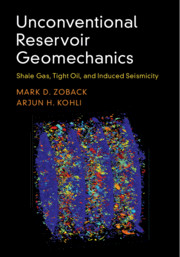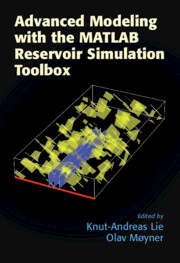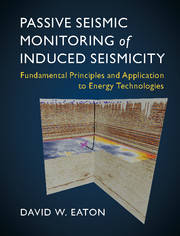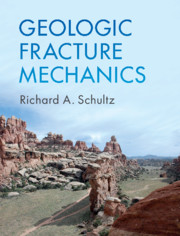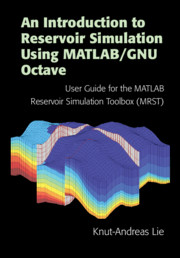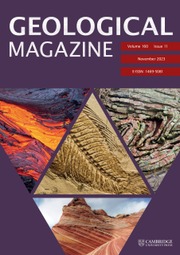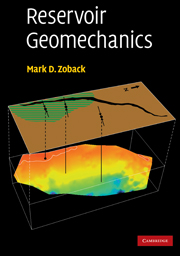Unconventional Reservoir Geomechanics
Since the beginning of the US shale gas revolution in 2005, the development of unconventional oil and gas resources has gathered tremendous pace around the world. This book provides a comprehensive overview of the key geologic, geophysical, and engineering principles that govern the development of unconventional reservoirs. The book begins with a detailed characterization of unconventional reservoir rocks: their composition and microstructure, mechanical properties, and the processes controlling fault slip and fluid flow. A discussion of geomechanical principles follows, including the state of stress, pore pressure, and the importance of fractures and faults. After reviewing the fundamentals of horizontal drilling, multi-stage hydraulic fracturing, and stimulation of slip on pre-existing faults, the key factors impacting hydrocarbon production are explored. The final chapters cover environmental impacts and how to mitigate hazards associated with induced seismicity. This text provides an essential overview for students, researchers, and industry professionals interested in unconventional reservoirs.
- Provides a comprehensive overview of unconventional resources from nanometer scale pores to sedimentary basins with a scale of 100's of kilometres, allowing the reader to understand the full range of critical geologic and engineering issues
- Intended for a wide audience from diverse technical disciplines, the book will allow engineers to learn key issues of seismology, seismologists to learn about geology, and geologists to learn about engineering
- Written by expert authors from Stanford University, this will be an authoritative text on unconventional reservoirs for students, researchers and industry professionals
Reviews & endorsements
'Zoback and Kohli’s thoughtful and comprehensive examination of the critical role that geomechanics plays in unlocking the potential of unconventional reservoirs is a powerful resource for any engineer or geoscientist working in this arena.' Peter H. Hennings, University of Texas
'In this timely and important book, Zoback and Kohli draw on over ten years of research to describe in detail the full breadth of impact that geomechanics has on unconventional reservoir development. This book will benefit all involved with the fast-moving field of applied geomechanics, providing a good grounding of the basics to those new to the field, and new insights to current practitioners.' Steve Willson, Apache Corporation
'This book is sorely needed, long overdue, and should be required reading for both academics and industry professionals working in the unconventional reservoir space. While focused on geomechanics, the book contains information relevant to all aspects of the development of unconventional reservoirs, ranging from basin analysis and sweet spot identification to risk assessment associated with hydraulic fracturing and produced water injection. This book addresses some misconceptions about the mechanical properties of unconventional shales, and challenges common assumptions regarding the variation in horizontal stress as a function of depth. Perhaps most importantly, the book provides practical advice for optimizing the stimulation of unconventional reservoirs.' Paul Hagin, Chevron Corporation
‘This book is a comprehensive reference and text for unconventional reservoir geomechanics and represents learnings from 11 years of research on the topic at Stanford University. It is state of the art and up to date with current industry practice and the latest research in the field. The book serves as the text for an edX Stanford Online course that I had the pleasure of auditing. The edX course was great, and it followed the book closely, with the authors as lecturers. There is also a reservoir geomechanics edX course that follows Zoback's previous textbook. I recommend both courses and both books. This is a well-illustrated and readable textbook with real-world examples. It is well suited for students, an excellent introduction for those new to the field, and a great reference for researchers and professionals.’ Dimitri Bevc, The Leading Edge, Society of Exploration Geophysicists
Product details
May 2019Adobe eBook Reader
9781108658140
0 pages
273 b/w illus. 30 maps 19 tables
This ISBN is for an eBook version which is distributed on our behalf by a third party.
Table of Contents
- Part I. Physical Properties of Unconventional Reservoirs:
- 1. Introduction
- 2. Composition, fabric, elastic properties and anisotropy
- 3. Strength and ductility
- 4. Frictional properties
- 5. Pore networks and pore fluids
- 6. Flow and sorption
- 7. Stress, pore pressure, fractures and faults
- Part II. Stimulating Production from Unconventional Rservoirs:
- 8. Horizontal drilling and multi-stage hydraulic fracturing
- 9. Reservoir seismology
- 10. Induced shear slip during hydraulic fracturing
- 11. Geomechanics and stimulation optimization
- 12. Production and depletion
- Part III. Environmental Impacts and Induced Seismicity:
- 13. Environmental impacts and induced seismicity
- 14. Managing the risk of injection-induced seismicity
- References
- Index.

